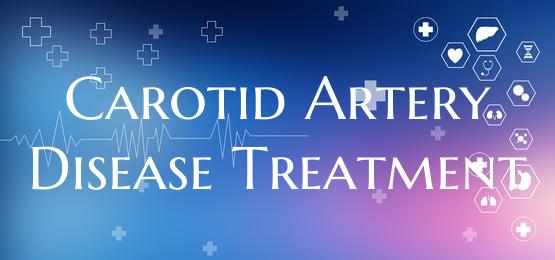
Carotid Artery Disease Treatment
Carotid Artery Disease Treatment: A Comprehensive Overview
Carotid artery disease is a condition characterized by the narrowing or blockage of the carotid arteries, which are the major blood vessels in the neck that supply oxygen-rich blood to the brain. This condition can lead to serious health complications, including stroke and transient ischemic attacks (TIAs or "mini-strokes"). Fortunately, there are various treatment options available to manage carotid artery disease and reduce the risk of these life-threatening events.
1. Lifestyle Modifications: One of the primary approaches to managing carotid artery disease is making healthy lifestyle changes. This includes adopting a heart-healthy diet low in saturated fat and cholesterol, engaging in regular physical activity, maintaining a healthy weight, and quitting smoking. These lifestyle modifications can help prevent the progression of the disease and reduce the risk of complications.
2. Medications: In some cases, medications may be prescribed to manage carotid artery disease. Commonly used medications include antiplatelet agents like aspirin or clopidogrel to prevent blood clot formation, statins to lower cholesterol levels, and blood pressure-lowering drugs to control hypertension. These medications can help improve blood flow and reduce the risk of stroke.
3. Carotid Endarterectomy: Carotid endarterectomy is a surgical procedure used to remove plaque buildup from the carotid arteries. During the procedure, a vascular surgeon makes an incision in the neck, opens the affected artery, and removes the plaque deposits to restore proper blood flow to the brain. Carotid endarterectomy is often recommended for individuals with significant narrowing of the carotid arteries or a history of TIAs or strokes.
4. Carotid Angioplasty and Stenting: For some patients, carotid angioplasty and stenting may be recommended as an alternative to carotid endarterectomy. This minimally invasive procedure involves inserting a catheter with a balloon at the tip into the narrowed carotid artery. The balloon is inflated to widen the artery, and a stent is placed to keep the artery open and ensure smooth blood flow. Carotid angioplasty and stenting are typically considered for patients who are at high risk for complications from surgery.
5. Follow-Up Care: After undergoing treatment for carotid artery disease, regular follow-up care is essential to monitor the condition and prevent future complications. This may include routine check-ups, imaging tests to assess the status of the carotid arteries, and medication adjustments as needed.
In conclusion, carotid artery disease treatment aims to reduce the risk of stroke and other serious complications by addressing the underlying causes of the condition. By following a comprehensive treatment plan that may include lifestyle modifications, medications, and surgical interventions, individuals with carotid artery disease can effectively manage their condition and improve their overall health outcomes. It is important for patients to work closely with their healthcare providers to determine the most suitable treatment approach based on their unique medical history and risk factors.